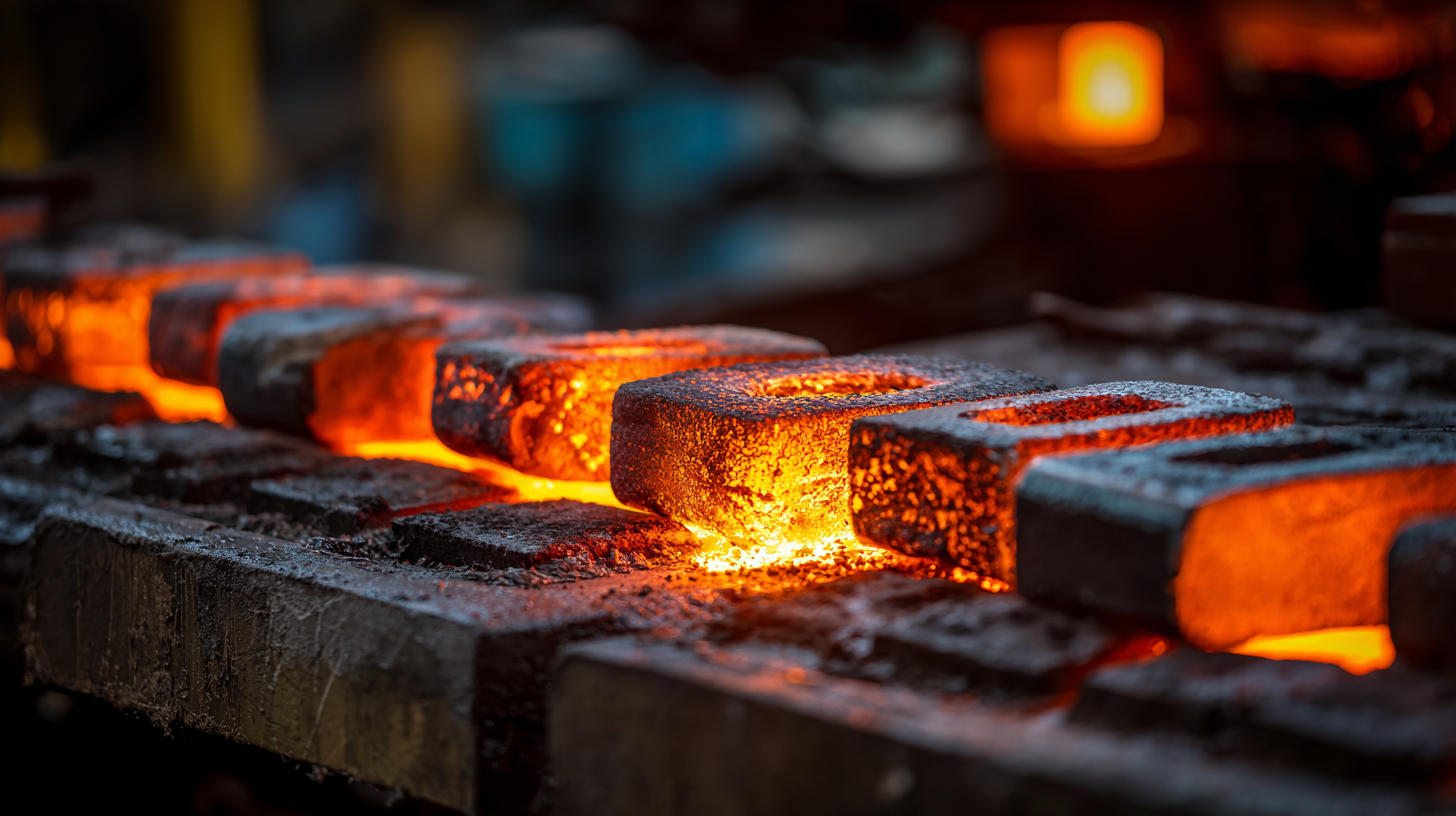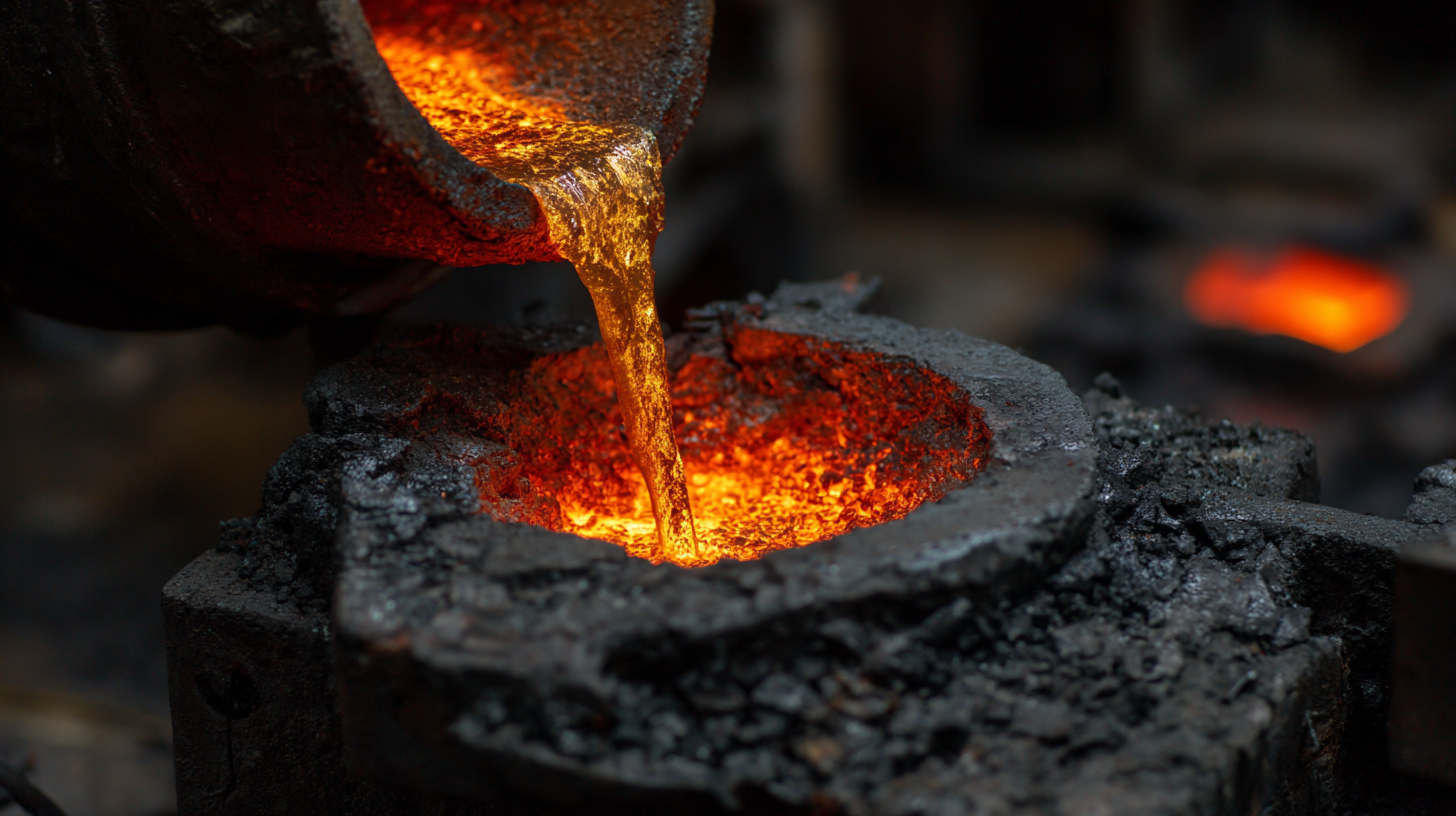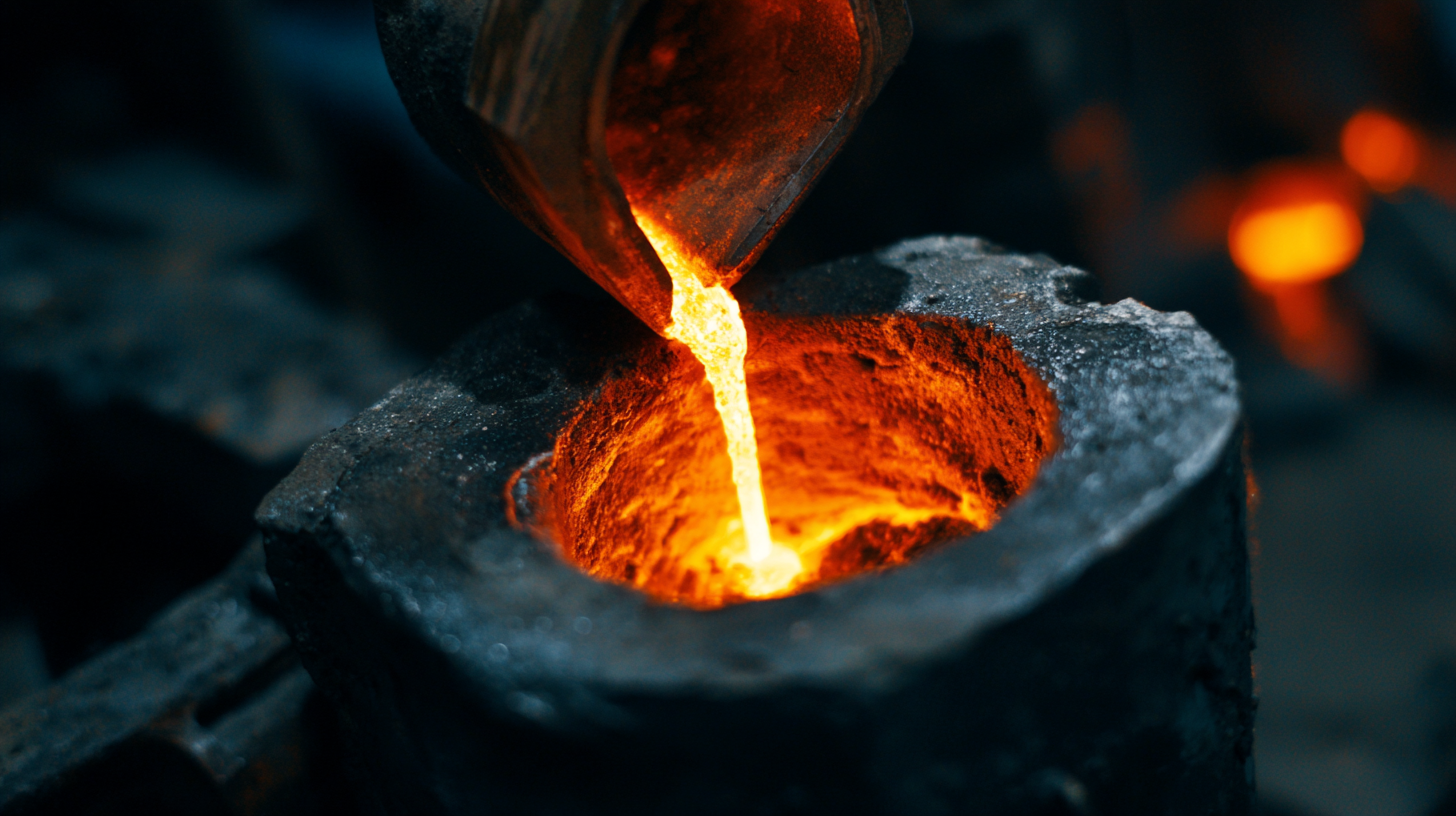In the highly competitive world of manufacturing, sourcing the right materials is crucial for success, particularly when it comes to specialized processes like Lost Wax Steel Casting. According to a recent industry report by MarketsandMarkets, the global investment casting market, which includes lost wax casting, is projected to reach USD 20.31 billion by 2026, growing at a CAGR of 5.8% from 2021. This growth underscores the increasing demand for high-quality, precision-engineered components across various sectors, including aerospace, automotive, and medical industries. As manufacturers seek to enhance product performance and reliability, understanding the nuances of Lost Wax Steel Casting becomes essential. This ultimate guide aims to equip you with the knowledge and strategies needed to source the best Lost Wax Steel Casting for your specific manufacturing needs, ensuring you stay ahead in a fast-evolving market.

When it comes to lost wax steel casting, manufacturers often encounter various challenges that can impact both the quality of the final product and overall production efficiency. One significant issue is the precision of dimensional stability. As highlighted in an Ishikawa cause-effect diagram, factors such as mold material quality, process adaptability, and temperature control play crucial roles in preventing defects and ensuring accurate dimensions.

Additionally, the investment casting market is projected to experience substantial growth, reaching a value worth $42.18 billion by 2029, with a compound annual growth rate (CAGR) of 5.6%. This growth underlines the increasing complexity of application techniques and the requisite equipment improvements needed to overcome production hurdles. For instance, recent studies have explored innovative methods like 3D printed foam patterns that may enhance the casting process, indicating a shift towards more advanced and efficient practices in the industry.
Understanding these challenges and leveraging the latest technologies can significantly improve success rates in lost wax steel casting, allowing manufacturers to meet demanding production standards and fulfill diverse manufacturing needs.
When sourcing lost wax steel castings for manufacturing, quality issues can arise and significantly impact production. Recent events at a steel plant in Pennsylvania underscore the importance of rigorous quality control measures. An explosion that resulted in fatalities not only highlights safety considerations but also raises questions about the integrity of materials being used in the industry. It is essential for manufacturers to ensure that their suppliers are adhering to strict quality standards, especially when dealing with processes like lost wax casting, which is known for its complexity and precision.
Identifying quality issues in lost wax steel castings involves thorough inspection and testing of both raw materials and finished products. Manufacturers should look for signs of defects such as porosity, inclusions, and dimensional inaccuracies. Implementing advanced inspection techniques can help detect these defects early in the production cycle, ultimately saving time and resources. Emphasizing quality from the outset will not only enhance product performance but also help prevent disasters that may stem from material failure, ensuring a safer working environment for everyone involved.
When it comes to steel casting, avoiding defects is crucial for ensuring the integrity and longevity of the final product. One of the best practices is to thoroughly understand the lost wax casting process, which involves creating a wax model that is subsequently coated with a ceramic shell. This method allows for high precision and complex geometries, but any imperfections in the wax model can lead to significant flaws in the finished casting. Therefore, meticulous inspection and fine-tuning of the model prior to casting are vital steps in the process.
Another key strategy to prevent defects involves choosing the right materials and ensuring proper handling throughout the sourcing process. Selecting high-quality wax and ceramic materials minimizes the risk of inclusions or irregularities. Additionally, maintaining strict quality control measures at every stage—from material preparation to final inspections—ensures that any potential issues are identified early on. Engaging with a reputable supplier who specializes in lost wax steel casting can also provide valuable insights and recommendations, facilitating a smoother production process and resulting in defect-free components that meet your manufacturing needs.
| Casting Type | Material Grade | Common Applications | Common Defects | Best Practices |
|---|---|---|---|---|
| Lost Wax Casting | AISI 316 | Marine, Chemical Processing | Surface Imperfections | Proper Wax Pattern Design |
| Investment Casting | AISI 4140 | Automotive, Aerospace | Porosity | Optimize Pouring Technique |
| Cire Perdue Casting | AISI 6061 | Industrial Parts | Shrinkage Defects | Calibrate Cooling Rate |
| Precision Casting | Alloy Steel | Medical Equipment | Dimensional Inaccuracies | Use Advanced CAD Software |
| Sand Casting | Ductile Iron | Heavy Machinery | Mold Sand Contamination | Regular Mold Cleanliness Checks |
In the world of manufacturing, lost wax casting has emerged as a critical method for producing intricate metal components. However, one of the primary challenges faced by manufacturers is mitigating costs and time delays associated with these projects. According to a report by the Casting Industry, over 30% of delays in the casting process stem from inadequate supplier communication and oversight. This highlights the importance of selecting reliable partners who can ensure timely delivery and consistent quality in the lost wax casting process.
To minimize time and cost overruns, manufacturers should adopt strategies that leverage advanced planning and robust vendor relationships. Research from the American Foundry Society shows that investing in upfront design consultations can reduce production time by up to 25%. By refining designs early on and working closely with casting suppliers, manufacturers can identify potential issues that might lead to costly revisions and delays later in the process. Furthermore, choosing suppliers with a strong track record in lost wax casting can significantly enhance efficiency, as these partners are likely to have established processes to avoid common pitfalls that lead to extended lead times and increased costs.
Selecting the right supplier for lost wax steel casting can be a daunting task, especially when faced with various sourcing problems. One of the most critical factors is to thoroughly evaluate the supplier’s capabilities and experience in the industry. Look for a supplier with a proven track record and positive client testimonials. Understanding their manufacturing processes and quality control measures can give you insight into their reliability and product quality.

Tip: Always ask for samples before making a significant commitment. This will allow you to assess the quality and precision of the castings. It also provides an opportunity to gauge their responsiveness and willingness to collaborate on any modifications or specific requirements you may have.
Another essential tip is to prioritize communication. A supplier that maintains clear and open lines of communication can help you navigate any sourcing challenges more effectively. Establish expectations upfront, and regularly check in to ensure that the project stays on track. A proactive supplier will often be more invested in your success and can offer valuable insights throughout the manufacturing process.
